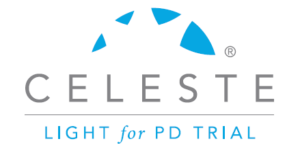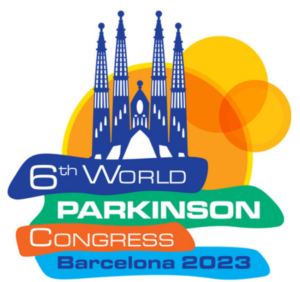PhotoPharmics Welcomes Three Renowned Experts to Its Clinical & Scientific Advisory Board
Company Strengthens Its Leadership in Neurodegenerative Disease Research with New Advisory Board Members
PhotoPharmics, an innovator in light-based therapies for neurodegenerative diseases, proudly announces the appointment of three eminent experts to its Clinical & Scientific Advisory Board (CSAB). The new members—Dr. Charles H. Adler, Dr. George Brainard, and Dr. Robert A. Hauser—bring unparalleled expertise to the advisory board, reinforcing PhotoPharmics’ mission to pioneer groundbreaking treatments for Parkinson’s disease and other neurodegenerative disorders.

Dr. Charles Adler, Dr. George Brainard, and Dr. Robert Hauser (left to right)
“We are honored to welcome Dr. Adler, Dr. Brainard, and Dr. Hauser to our Clinical & Scientific Advisory Board,” said Kent Savage, CEO of PhotoPharmics. “Their expertise and groundbreaking research are invaluable as we continue to develop our light-based therapies. These additions underscore our commitment to advancing innovative treatments that improve the lives of patients worldwide.”
The addition of these three leading experts to PhotoPharmics’ Clinical & Scientific Advisory Board marks a pivotal step in the company’s mission to harness the power of light-based therapies for neurodegenerative disease treatment. A brief background on each includes:
- Charles H. Adler, M.D., Ph.D., is the Wayne and Kathryn Preisel Professor of Neuroscience Research and a Professor of Neurology at Mayo Clinic Arizona, where he co-leads the Arizona Study of Aging and Neurodegenerative Disorders. He has published over 600 research papers, focusing on diagnosing and treating movement disorders such as Parkinson’s disease, essential tremor, and dystonia. Dr. Adler’s research also includes exploring biomarkers for early Parkinson’s diagnosis and investigating chronic traumatic encephalopathy (CTE). He has held leadership positions in the International Parkinson and Movement Disorder Society and received numerous awards for his contributions to the field.
- George C. Brainard, M.A., Ph.D., is a professor at Thomas Jefferson University, where he has directed the Jefferson Light Research Program since 1984. His pioneering research examines how light affects human neuroendocrine physiology and circadian rhythms. Dr. Brainard is widely known for his work on melatonin regulation, which led to the discovery of a new class of photoreceptors in the eye. His research has applications in treating seasonal affective disorder (SAD), developing lighting countermeasures for astronauts, and improving lighting designs for healthcare and architectural purposes. He has published over 100 research articles and received numerous awards, including NASA’s Johnson Space Center Director’s Innovation Award.
- Robert A. Hauser, M.D., MBA, is the Director of the Parkinson’s Disease and Movement Disorders Center at the University of South Florida (USF) Health Morsani College of Medicine. A leading neurologist with over 350 peer-reviewed publications, Dr. Hauser is one of the most cited experts in Parkinson’s disease. His research focuses on developing new treatments for Parkinson’s and other movement disorders. He is also highly regarded for his expertise in clinical trial design and the development of outcome measures that have become global standards in the field.
Dr. C. Warren Olanow, M.D., chairman of the CSAB, added, “The inclusion of Drs. Adler, Brainard, and Hauser significantly enhances our board’s capabilities. Their unique perspectives will guide our research and clinical efforts, ensuring PhotoPharmics remains at the forefront of innovation in treating neurodegenerative diseases.”
These distinguished professionals join an accomplished advisory board, which also includes:
- Ray Chaudhuri, M.D. – A global authority on the non-motor symptoms of Parkinson’s disease and professor of neurology/movement disorders at King’s College London.
- Dr. Rajesh Pahwa, M.D. – Chief of the Parkinson’s and Movement Disorder Division at the University of Kansas Medical Center, with expertise in over 100 clinical trials.
- Dr. Joohi Jimenez-Shahed, M.D. – Medical Director of Movement Disorders Neuromodulation at Mount Sinai Hospital, specializing in deep brain stimulation (DBS) and digital health technologies.
- Dr. Dan Claassen, M.D., M.S. – Chief of Behavioral and Cognitive Neurology at Vanderbilt University, with a focus on neurodegenerative disorders affecting cognition, behavior, and movement.
- Dr. Amy Amara, M.D., Ph.D. – A leading researcher at the University of Alabama at Birmingham, specializing in sleep disorders in Parkinson’s disease.
For full details on the CSAB members, please visit here.
The Clinical & Scientific Advisory Board (CSAB) of PhotoPharmics serves as a critical resource for guiding the company’s research and development efforts. Comprised of leading experts in neurology, movement disorders, and light-based therapies, the CSAB provides strategic advice on clinical trial design, scientific research, and the development of innovative treatments. The board’s purpose is to ensure that PhotoPharmics’ products are grounded in the latest scientific evidence, meet the highest standards of safety and efficacy, and address the unmet needs of patients with neurodegenerative diseases. By leveraging the collective expertise of its members, the CSAB plays a vital role in advancing PhotoPharmics’ mission to improve patient outcomes through groundbreaking therapies.
About PhotoPharmics
PhotoPharmics is a privately held, clinical-stage medical device company pioneering the development of next-generation light-based therapies for neurodegenerative disorders, with a primary focus on Parkinson’s disease. The company is currently conducting a landmark Phase 3 clinical trial—the first of its kind to evaluate a non-invasive light therapy device for Parkinson’s disease at this level. The trial is underway and aims to assess the impact of light therapy on both motor and non-motor symptoms, with the potential to transform the standard of care for patients.
Building on over 30 years of innovation, PhotoPharmics’ founders have a legacy of pioneering light solutions, including those acquired by Philips-Respironics in 2007. The company remains committed to delivering safe, effective, and non-invasive treatments that improve quality of life. For more information and investor inquiries, visit www.photopharmics.com.
###
PR11701



 PhotoPharmics, a leading innovator in Parkinson’s disease, today announced that it will be presenting its pivotal trial design at the
PhotoPharmics, a leading innovator in Parkinson’s disease, today announced that it will be presenting its pivotal trial design at the 



